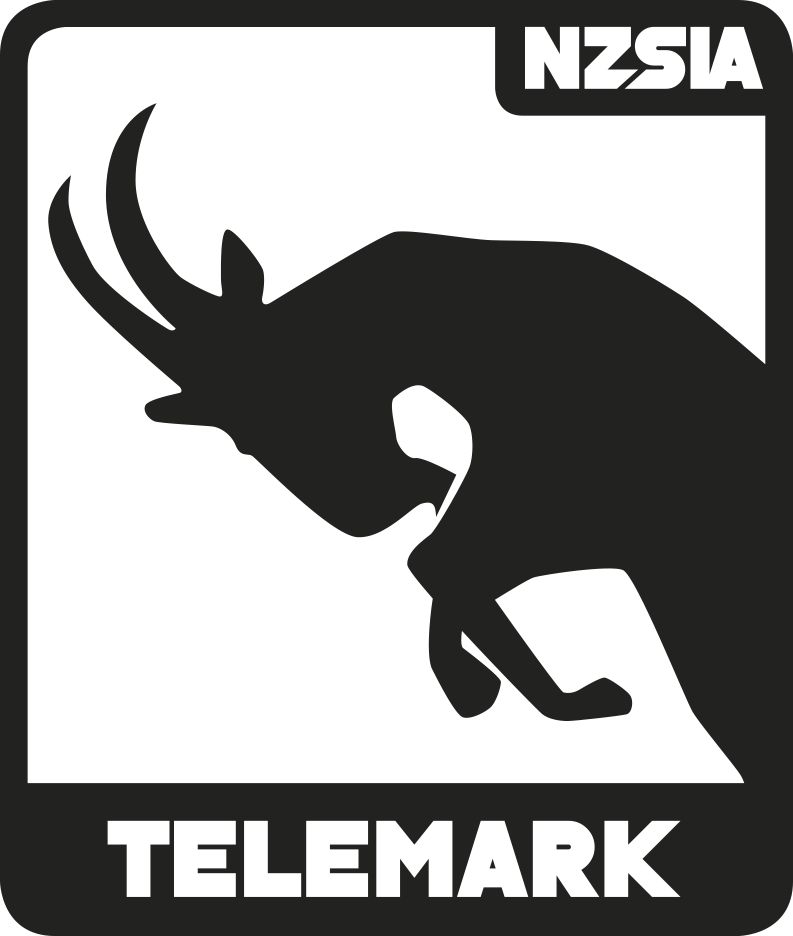Here we talk about how gravity, friction, and snow reaction forces influence a telemark skier’s movement and balance. This section highlights how these external forces interact with the skier’s mass, center of gravity, and base of support, particularly within the unique demands of the telemark stance. It explains the principles behind managing pressure, understanding centripetal and resultant forces, and maintaining balance while turning. The chapter also introduces platform and steering angles, which help determine grip and turn shape.
![]()
Centre of Gravity & Base of Support
Speed and grip are two essential factors for making a turn; as a result, centripetal force is present. This force, acting towards the centre of the turn, requires skiers to move their centre of gravity inside the path of their base of support to maintain balance.
To counteract the force from the snow in a ski turn, the centre of gravity must shift inside the turn. Consequently, the path of the centre of gravity will always be inside the path of the base of support during a turn.
Lateral movement of the centre of gravity toward the centre of the turn is necessary to balance with the forces at play. As the skier’s centre of gravity moves inward, the paths of the centre of gravity and the base of support (when viewed from above) will differ. This difference exists in all types of turns but varies in magnitude.
The degree to which a skier can incline, or move their centre of gravity inside their base of support, is determined by the amount of centripetal force acting on them. Faster speeds or tighter turn radii generate greater centripetal force (see the section on centripetal force), allowing the skier to incline more.
When a telemark skier begins linking J-turns, the skier moves at relatively slow speeds, and centripetal force, while present, is low in intensity. Therefore, the centre of gravity’s path remains close to the base of support’s path. In a basic parallel telemark turn, increased speed results in greater centripetal force, widening the gap between the centre of gravity’s path and the base of support’s path. In a dynamic medium-radius turn, the force from the snow is even more intense, requiring significant inclination to stay in balance. As a result, the centre of gravity and base of support follow distinctly different paths (see diagram below).

Ski Grip and Reaction Forces
For a turn to take place, the ski must grip the snow to some degree. This depends on:
- The ski penetrating the snow
- The snow holding and pushing back against the ski
On hard-packed snow, minimal penetration occurs, and the snow reacts and pushes back quickly. In powder or softer snow, the reaction that creates turning happens more slowly, as the snow must compact to a point where it can push back against the ski and initiate the turn. This force pushing back from the snow is referred to as the reaction force.
In a turn, a skier experiences the combined effects of gravity, centripetal force, and the perceived centrifugal force. The faster a skier moves through a turn, the stronger the centripetal and centrifugal forces become. As these forces increase, the skier must move their center of gravity further inside the turn relative to their base of support. This movement enables the skier to execute a round turn at higher speeds.

